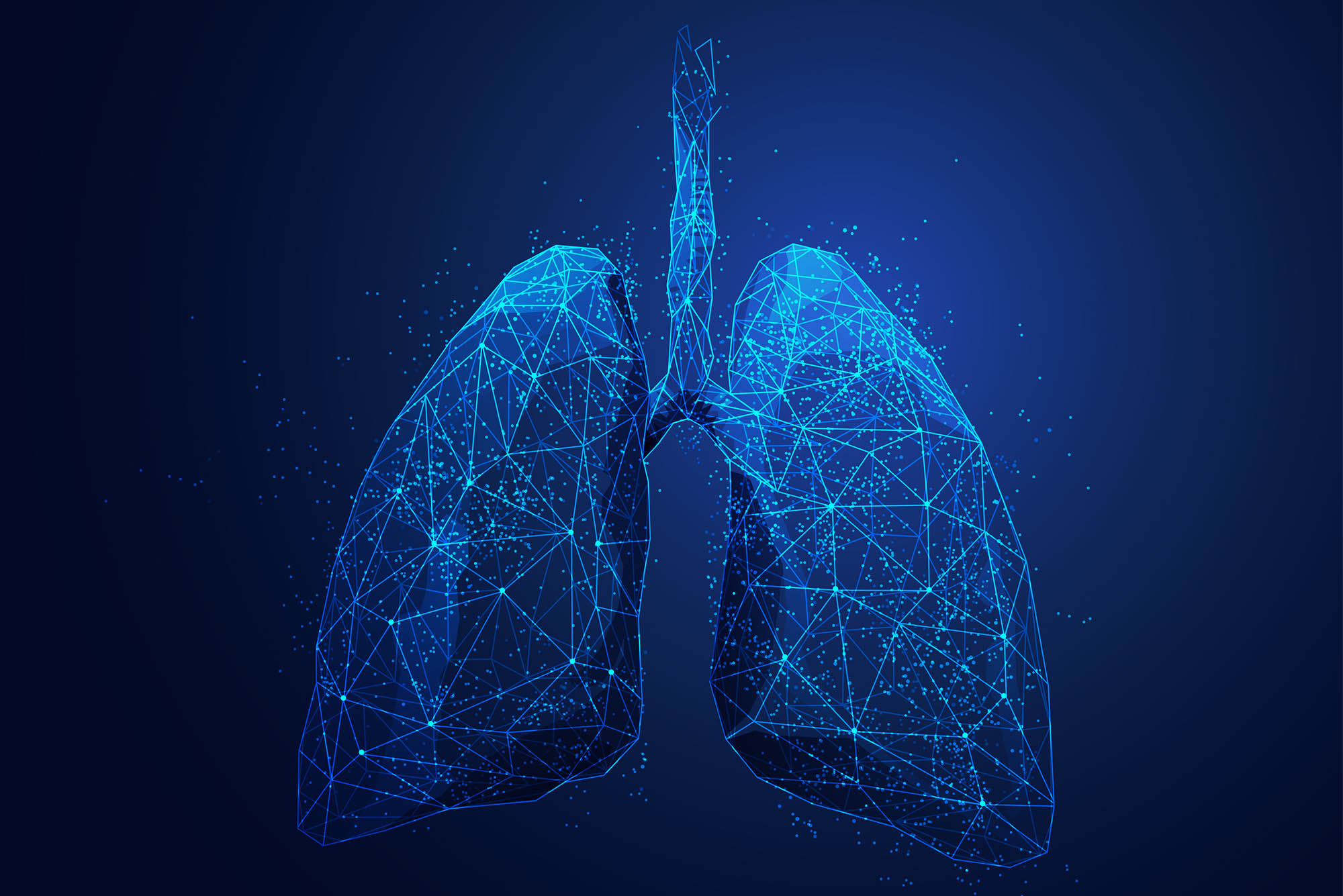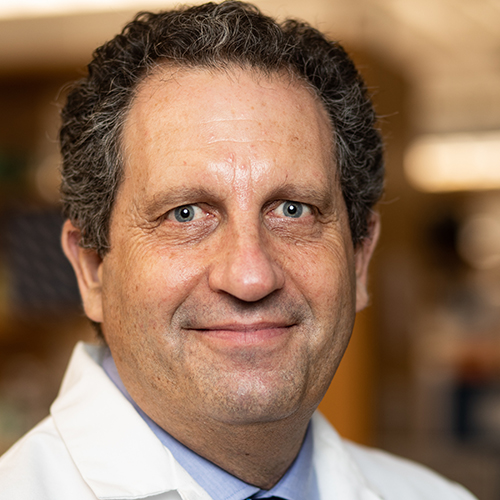BU Researchers See Future Where Lung Disease Is Treatable, and Damaged Lungs Are Regenerated
Figuring out how to make damaged lungs like new again has been Darrell Kotton’s life work. Now, he is one step closer

Darrell Kotton and his team imagine a future where they can use a patient’s own cells to fix lung damage caused by disease by reprogramming cells in a laboratory dish and transplanting them back into the patient. Photo by Jackie Niam/iStock
BU Researchers See Future Where Lung Disease Is Treatable, and Damaged Lungs Are Regenerated
Figuring out how to make damaged lungs like new again has been Darrell Kotton’s life work. Now, he is one step closer
For more than 20 years, a team of Boston University scientists have been on a quest to not just figure out how to treat incurable lung diseases, but also how to regenerate damaged lungs so they’re as good as new.
That is the goal of pulmonologist Darrell Kotton and his lab at the Center for Regenerative Medicine (CReM), a joint effort between the University and Boston Medical Center, BU’s primary teaching hospital. By refining their work using sophisticated stem cell technology, Kotton and his team are closer to realizing that vision than ever before.

In two new studies published in Cell Stem Cell, BU researchers detail how they engineered lung stem cells and successfully transplanted them into injured lungs of mice. Two lines of cells targeted two different parts of the lung: the airways, including the trachea and bronchial tubes, and the alveoli, the delicate air sacs that deliver oxygen to the bloodstream. Their findings could eventually lead to new ways for treating lung diseases, including severe cases of COVID-19, emphysema, pulmonary fibrosis, and cystic fibrosis, a disease caused by a genetic mutation.
“We’ve accomplished this by getting better and better at generating the cells,” says Kotton, a BU Chobanian & Avedisian School of Medicine professor of medicine, director of CReM, and corresponding author on both papers.
Kotton and his team imagine a future where they can use a patient’s own cells to fix lung damage caused by disease by reprogramming cells in a laboratory dish and transplanting them back into the patient. The new lung cells would replicate, like regular cells do, replacing the damaged and diseased areas of the lung.
New Treatment Possibilities
Bringing damaged lungs back to normal function without a lung transplant is possible with stem cells, which can develop into other specialized cells in the body. There are many different types of stem cells that have been discovered over the years, but Kotton and his lab focus on a type called pluripotent stem cells.
These cells are found only in embryos. But in 2006 scientist Shinya Yamanaka figured out how to genetically reprogram adult skin or blood cells into an embryonic stem cell–like state. Those engineered cells are called induced pluripotent stem (iPS) cells, and won Yamanaka the Nobel Prize in Physiology or Medicine in 2012. Induced pluripotent stem cells can be turned into any cell type in the body, including lung cells. Kotton and his team—which includes Chobanian & Avedisian School of Medicine Professors Finn Hawkins and Xaralabos Varelas, College of Arts & Sciences Professor of Physics Pankaj Mehta, and many other researchers—developed methods for engineering each of the lung’s stem cells in the laboratory using iPS cells, including by using machine learning methods. This step helped them determine the best conditions for generating cells that could go on to be lung cells. And then they developed methods for transplanting them into experimental mouse models with injured lungs.
“We demonstrated that engineered cells, which have never before been part of a lung, can be transplanted into injured mouse lungs, where they integrate into the host’s respiratory system and behave similar to the host’s pulmonary cells,” says Michael Herriges, a postdoctoral fellow in the Kotton Lab and lead author of the paper focused on the lung air sacs. As one can imagine, making lung cells that can be used for therapy from just microscopic clumps of unspecified iPS cells is a long and complicated process—and one that has been Kotton’s life work.
“The fact that we can generate a functional engineered version in living tissue is still amazing to me and it opens up the possibility for new treatments for patients with lung disease,” Herriges says.
The fact that we can generate a functional engineered version in living tissue is still amazing to me and it opens up the possibility for new treatments for patients with lung disease.
The cells that were transplanted into the mice lasted the entirety of their lifespan, over two years. Now, they must figure out whether or not the cells can actually prevent disease progression in the mouse models, and eventually they will have to test their technique in larger animals with lungs that more closely resemble human lungs.
“Many lung diseases are characterized by irreversible tissue damage,” says Martin Ma, an MD/PhD student in molecular and translational medicine and the lead author of the paper focused on lung airways. “Since the lung is not the most regenerative compared to other organs in the body, damage can lead to much suffering for patients without a ton of treatment options.”
Ma believes that years down the line, the process for fixing damaged lungs could appeal to patients who would rather not take medications every day for their whole lives, and at the least put another option on the table for patients who suffer from genetic lung diseases that do not have a current medical therapy. For example, a patient with a genetic lung disease like cystic fibrosis would have a drop of their blood taken. The blood cells would be reprogrammed into iPS cells, and then manipulated using methods developed in the Kotton Lab to recreate in a laboratory dish the lung cells that are needed. Those cells would be gene edited to correct the genetic mutation causing the disease and, last, transplanted back into the patient. Unlike getting a lung transplant, which involves heavy immunosuppressants so the body doesn’t reject the new organ, a patient would ideally tolerate their own cells without rejecting them, with no need for immunosuppression.
“This is our first attempt to build a future clinical model where we can start to think about reconstituting healthy tissue, the return of healthy tissue in the really diseased,” Ma says. Beyond their clinically focused goals, the researchers hope their work continues informing basic science questions, like how cells communicate with each other, what mechanisms regulate the identity of lung cells, and what makes them different from one another.
“Our work builds on a lot of basic science research that didn’t originally have a clinical goal,” says Ma, such as the invention of iPS cells. “My hope is that our papers can create a platform for other researchers in the community to generate more foundational knowledge that future translational studies will eventually build upon.”
Funding for these studies was provided by the National Institutes of Health National Heart, Lung, and Blood Institute and the Boston University Kilachand Multicellular Design Program Accelerator.

Comments & Discussion
Boston University moderates comments to facilitate an informed, substantive, civil conversation. Abusive, profane, self-promotional, misleading, incoherent or off-topic comments will be rejected. Moderators are staffed during regular business hours (EST) and can only accept comments written in English. Statistics or facts must include a citation or a link to the citation.